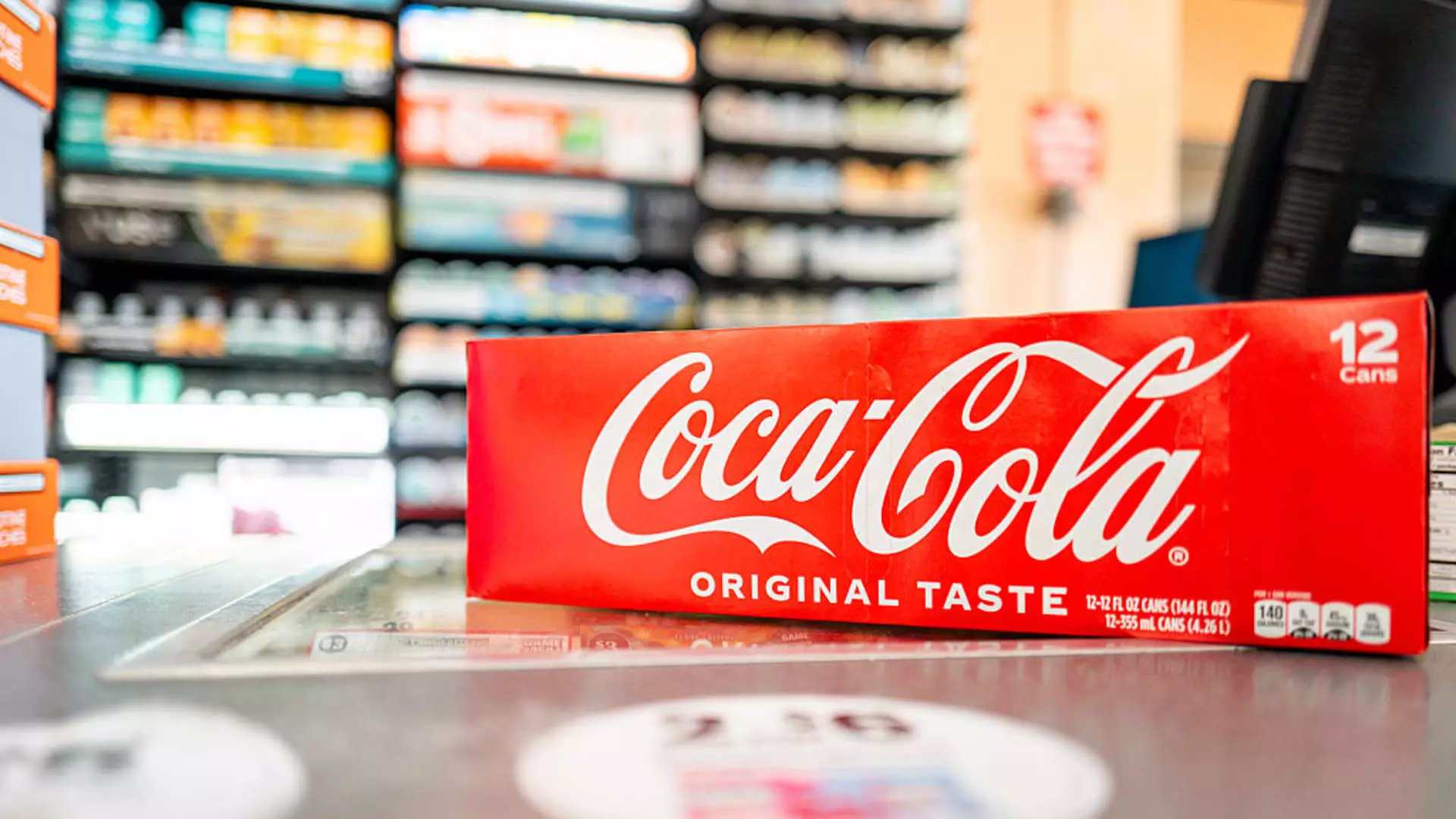Coca-Cola recently announced a marginally better-than-expected quarter, but a deeper analysis reveals a tainted victory. The company’s reported earnings per share and revenue surpassed Wall Street’s forecasts, yet beneath this veneer lies a landscape of stagnation and strategic manipulation. The headlines tout a “strong demand” in Europe, yet the reality points to a fragile recovery amid persistent global challenges. The company’s claims of organic growth and improved results are, at best, cautiously optimistic, masking underlying issues that threaten its long-term stability.
While Coca-Cola boasts a 5% increase in organic revenue, this figure disguises a more troubling pattern. The 1% decline in global unit case volume, coupled with declines in Latin America and Asia-Pacific, indicates waning demand in key markets. The company’s reliance on pricing strategies and currency benefits to inflate revenue figures is a classic tactic that obfuscates actual consumer engagement. A mere 5% organic growth does little to justify optimism when demand is shrinking and volumes are slipping, revealing that the company’s so-called resilience may be illusionary.
Market Shows Signs of Fragility, Not Strength
The regional data underscores the uneven nature of Coca-Cola’s performance. North American demand dipped by 1%, despite CEO James Quincey’s optimistic tone about “improvement.” This suggests that any growth is fragile, tethered to pricing rather than genuine consumer enthusiasm. The company’s attempt to frame the North American market as resilient overlooks the reality: consumers are saving, cutting back, and prioritizing essentials amid economic uncertainties. The mention of targeting lower-income consumers with “affordability” measures hints at a sector on the brink of decline, where a shrinking or at best stagnant consumer base threatens future profits.
Furthermore, the social media controversy surrounding Coca-Cola’s alleged reporting of undocumented workers, although denied, had a tangible impact on Hispanic consumer sales. This incident highlights the volatility of brand perception in an age where reputational risks are amplified and spill over directly into sales. Coca-Cola’s delayed response and subsequent normalization of sales do little to dispel concerns that social issues could further erode consumer trust, especially among health-conscious and socially aware demographics.
The declines in Latin America and Asia-Pacific—2% and 3% respectively—serve as cautionary signs. These regions, historically vital for Coca-Cola’s growth trajectory, are experiencing demand contraction rather than expansion. The company’s attempt to continue growth in these markets, largely through pricing and product differentiation, risks superficial gains that cannot withstand sustained economic pressure.
Strategic Shifts Mask Deeper Problems
The company’s plan to reintroduce a cane sugar version of its flagship cola in the U.S. serves as a distraction from more pressing structural issues. It signals an attempt to appeal to niche markets or nostalgic consumers but does little to address the broader decline in soda consumption driven by health trends and changing preferences. Coca-Cola faces a significant challenge in adapting to a shifting landscape where consumers are increasingly opting for healthier alternatives, and soft drinks are no longer a staple in daily life.
Coca-Cola’s projected 3% growth in earnings per share for the full year aligns with its pattern of maintaining steady projections despite evident market volatility. It is a testament not to robustness but to a corporate reliance on optimistic guidance and cost-cutting strategies. The company’s emphasis on revenues from diversified segments like water, coffee, and plant-based beverages appears more as diversification for survival than a genuine pivot towards future growth.
In essence, Coca-Cola’s latest report underscores that the company remains a fragile colossus, propped up by pricing tactics, currency wins, and selective market performances. The narrative of resilience and growth is, at best, a carefully curated image that conceals challenges—be it declining volumes, intensifying competition from healthier beverage options, or social and geopolitical headwinds. For a corporation that once epitomized global success, it now teeters on the edge of strategic overstretch, clinging to diminishing returns in an era of meaningful consumer and societal change.

